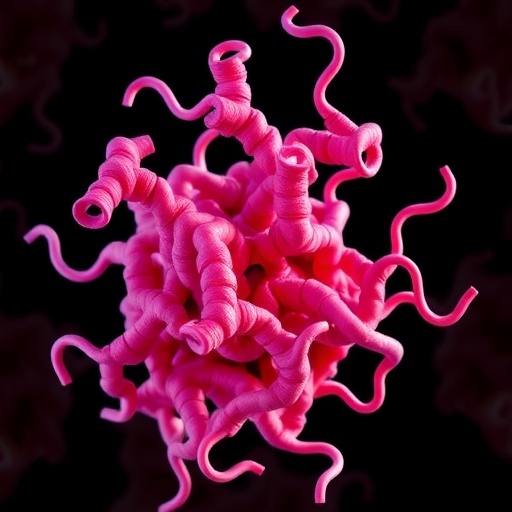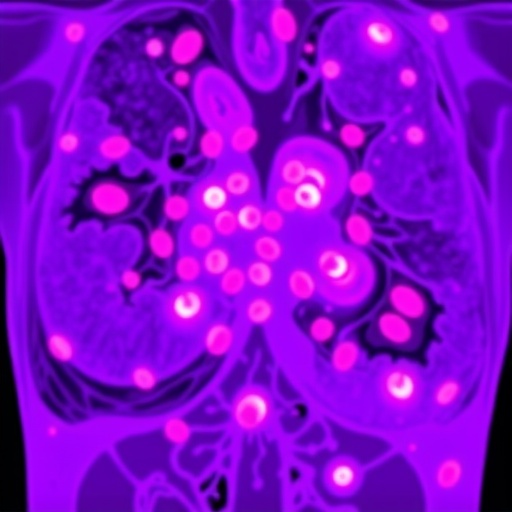In a groundbreaking study that merges the frontiers of artificial intelligence and molecular biology, researchers led by Professor Naomi Osakabe at the Shibaura Institute of Technology in Japan have unveiled a detailed structural prediction of human bitter taste receptors using the state-of-the-art AlphaFold3 (AF3) model. This research offers unprecedented insights into the three-dimensional architectures of bitter taste receptors (T2Rs), highlighting their potential roles beyond gustation, particularly in the gut-brain axis and metabolic regulation.
Bitter taste receptors, belonging to the T2R family, have traditionally been studied within the context of oral sensory perception. However, emerging evidence has shown that these receptors are not confined to the oral cavity but are also expressed in the gastrointestinal tract, especially within neuropod cells involved in signaling between the gut and brain. This expanded understanding necessitates a detailed comprehension of their molecular structures to elucidate their diverse physiological functions, ranging from nutrient sensing to modulating appetite and glucose metabolism.
The current landscape of bitter taste receptor structural biology has been limited by the complexities intrinsic to membrane-bound G protein-coupled receptors (GPCRs) like T2Rs, whose hydrophobic regions and conformational flexibility pose significant challenges for experimental determination. Until now, only two human T2R structures, T2R14 and T2R46, had been resolved through experimental techniques such as cryo-electron microscopy (cryo-EM). To overcome these limitations, the research team harnessed the cutting-edge capabilities of AF3, an artificial intelligence model that marks an advancement over its predecessor, AlphaFold2 (AF2), in precision and reliability of protein structure predictions.
The researchers systematically retrieved amino acid sequences for all 25 identified human T2Rs from the UniProt database and applied the AF3 algorithm to predict their three-dimensional conformations. These in silico models were rigorously compared to the previous AF2 predictions and validated against available experimental data from the Protein Data Bank. The AF3 model demonstrated superior accuracy, particularly in reproducing the structural nuances of T2R14 and T2R46, as benchmarked against a comprehensive set of 115 cryo-EM structures for T2R14, emphasizing its potential to revolutionize receptor biology disciplines.
The structural analyses revealed both conserved and divergent elements within the T2R family. The intracellular domains, which interface with signal transduction machinery such as G proteins, exhibited notable structural conservation across different T2Rs, suggesting a preserved mechanism of intracellular signaling. Conversely, extracellular domains, responsible for ligand recognition, displayed considerable structural heterogeneity, underpinning the wide range of bitter compounds these receptors can detect. This dichotomy in structural conservation has important implications for understanding receptor specificity and function.
Based on structural similarities determined via sophisticated clustering algorithms, the T2Rs were segregated into three distinct clusters. Such clustering is valuable for decoding functional relationships among receptors and predicting ligand-receptor interactions, providing a roadmap for future pharmacological targeting. This categorization elucidates the evolutionary adaptations that have diversified bitter taste sensing, likely reflecting the need to detect an extensive array of potentially harmful bitter molecules in the environment.
Central to the bitter taste signaling pathway is the G protein α-gustducin, which couples with bitter taste receptors upon ligand binding to initiate intracellular signaling cascades. The structural predictions indicate that the varied extracellular pockets accommodate binding of structurally diverse bitter ligands, which in turn activate α-gustducin to mediate downstream physiological responses. These molecular interactions underline the intricate biochemical dialogue that enables bitter taste perception and its ancillary roles in gut-brain communication.
The implications of this study extend far beyond sensory biology. The expression of T2Rs in gastrointestinal tissues implicates them in fundamental processes such as glucose homeostasis and appetite regulation, highlighting their emerging relevance in metabolic disorders like diabetes. Understanding the structural basis of T2R activation could facilitate the design of therapeutic agents aimed at modulating these receptors to treat or prevent lifestyle-related diseases.
Moreover, by leveraging AF3’s enhanced predictive power, this research exemplifies the transformative impact of artificial intelligence on structural biology, offering a route to decipher protein conformations that are difficult to resolve experimentally. AF3’s ability to generate high-fidelity models enables scientists to explore receptor-ligand interactions at an atomic level, accelerating drug discovery and the development of novel nutraceuticals targeting taste receptors.
Professor Osakabe emphasizes the significance of these findings in bridging molecular structure with physiological function, underscoring the importance of continued research to unravel how individual variations in T2R sequences and structures contribute to differences in bitter taste perception among individuals. Such personalized insights could inform dietary recommendations and therapeutic interventions tailored to individual sensory profiles.
The study, published on July 22, 2025, in the journal Current Research in Food Science, represents a collaborative effort involving experts in computational modeling and receptor biology, marking a milestone in taste receptor research. It propels the scientific community toward a more comprehensive understanding of how bitter taste receptors operate within and beyond the sensory realm, revealing their vital roles in human health and disease.
Looking ahead, the integration of AI-driven structural predictions with functional assays promises to uncover the full spectrum of T2R-mediated physiological effects, including their influence on gut microbiota, immune responses, and central nervous system signaling. This integrative approach will not only shed light on the molecular underpinnings of taste but also pave the way for innovative strategies to modulate taste receptors for health benefits.
In conclusion, the deployment of AlphaFold3 by Prof. Osakabe and her team has inaugurated a new era of receptor structural characterization. By illuminating the three-dimensional landscape of human bitter taste receptors with unprecedented detail, this study enriches our molecular understanding and underscores the potential of AI-driven approaches to transform biomedical research.
Subject of Research: Computational simulation/modeling of bitter taste receptor protein structures using AlphaFold3.
Article Title: The three-dimensional structure prediction of human bitter taste receptor using the method of AlphaFold3
News Publication Date: 22-Jul-2025
Web References:
Current Research in Food Science article
DOI: 10.1016/j.crfs.2025.101146
References:
Osakabe, N., Shimizu, T., Ohno, R., Calabrese, V. (2025). The three-dimensional structure prediction of human bitter taste receptor using the method of AlphaFold3. Current Research in Food Science, Volume 11.
Image Credits: Professor Naomi Osakabe, Shibaura Institute of Technology, Japan
Tags: AlphaFold3 structural analysisappetite modulation mechanismsbitter taste receptorsG protein-coupled receptorsglucose metabolism regulationgut-brain axis signalingmetabolic regulation mechanismsmolecular biology and AInutrient sensing in the gutreceptor architecture insightsstructural biology challengesT2R family receptors





